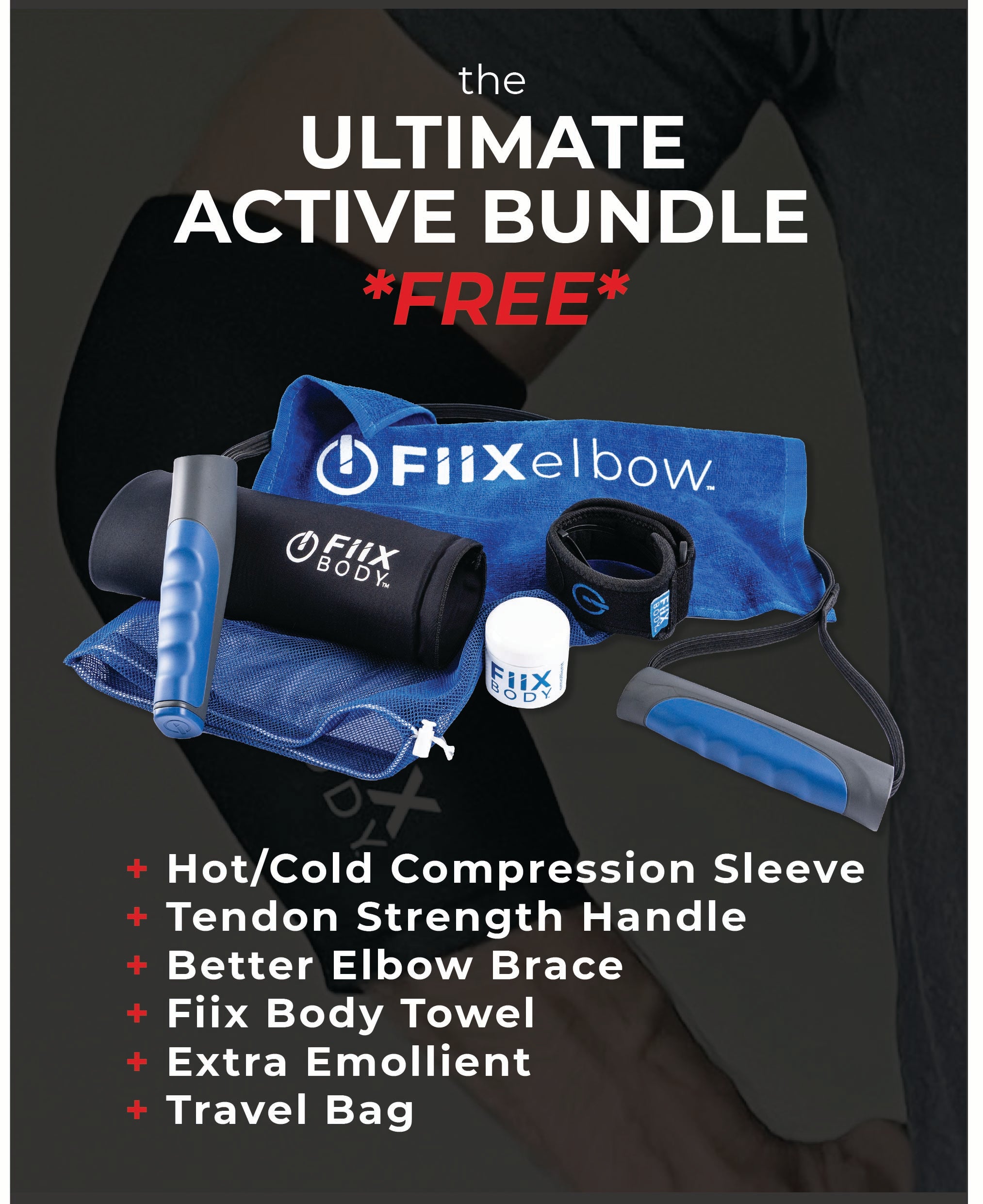Golfer’s elbow can be diagnosed in weight trainers, carpenters, pitchers, plumbers, rock climbers, assembly line workers, quarterbacks and more. Constantly performing the same motions with the arms and wrists leads to tiny tears in the forearm tendon over time, which causes collagen to be remodeled, scar tissue to form and the tendon to thicken while it progressively degenerates.
Symptoms
Symptoms of golfer’s elbow, which primarily occurs in the dominant arm, include:
- Pain or tenderness during movement or at rest
- A dull ache
- Sharp twinges
- Elbow stiffness
- Weakened grip strength
- Numbness or tingling down to the ring finger and pinky
- Difficulty using the forearms and wrists, such as to make a fist, swing a golf club, throw a ball, shake hands and lift weights
Treatment
Multiple treatment options exist to address golfer’s elbow, with varying levels of effectiveness and limited research proving efficacy. That said, more than 80-85 percent of golfer’s elbow cases can be successfully treated without surgery.Initial recommendations are to rest the arm and elbow, with ice application for any immediate inflammation at injury onset, and over-the-counter pain medicine like ibuprofen. While this can provide short-term pain relief, more comprehensive interventions go beyond simply masking symptoms.
Among the many options for treating golfer’s elbow:
- External support. Straps, braces and compression sleeves temporarily stabilize the joint and decrease the pressure on the tendon. Cryosleeves add cold therapy to reduce inflammation.
- Blood flow boosters. Tendons have poor blood supply, which hinders healing. To stimulate circulation and offer short-term pain relief, tools like TENS, EMS, ultrasound and extracorporeal shockwave therapy (ESWT) can be used.
- Manual therapy. Physical therapists, chiropractors and massage therapists can use hands-on techniques like instrument-assisted soft tissue mobilization (IASTM) to break down adhesions, activate blood flow and stimulate cellular regeneration in the forearm tendon.
- Exercises. Physical therapists also can prescribe a specific regimen of stretching and strengthening exercises that can improve the functioning and range of motion at the wrist and elbow joint.
- Injections. Shots of cortisone or platelet-rich plasma (PRP) into the site may temporarily reduce inflammation and relieve pain, but additional treatments usually are necessary. PRP injections are expensive and typically not covered by health insurance.
- Surgery. Only used other treatments are not successful, this involves removal of the damaged portion of the tendon and reattachment to the bone, followed by three to six months of recovery and rehabilitation.
One effective new treatment for golfer’s elbow Is the Fiix Elbow device from Stā Active, which automates IASTM and lets sufferers self-care conveniently at home with a regimen of 10 minutes per day, two to three times per week for eight weeks, plus simple stretching and strengthening exercises.
In patient trials, the Fiix Elbow reduced pain, improved grip strength and restored function in individuals with golfer’s elbow. In addition, users don’t have to deal with insurance deductibles and co-pays and appointment scheduling hassles, and can easily address periodic future flare-ups if necessary.
Prevention of golfer's elbow
To prevent golfer’s elbow, consider the following recommendations:- Regularly perform golfer's elbow strengthening exercises and stretch the forearms to maintain strength and range of motion
- Stretch before activity
- Have a golf instructor or pro evaluate your technique to ensure proper form and avoid overload
- Invest in good equipment, like lighter graphite clubs
- Take breaks when possible
- Always use proper lifting technique



Share:
Tennis elbow from DIY projects
Are tennis elbow straps effective?